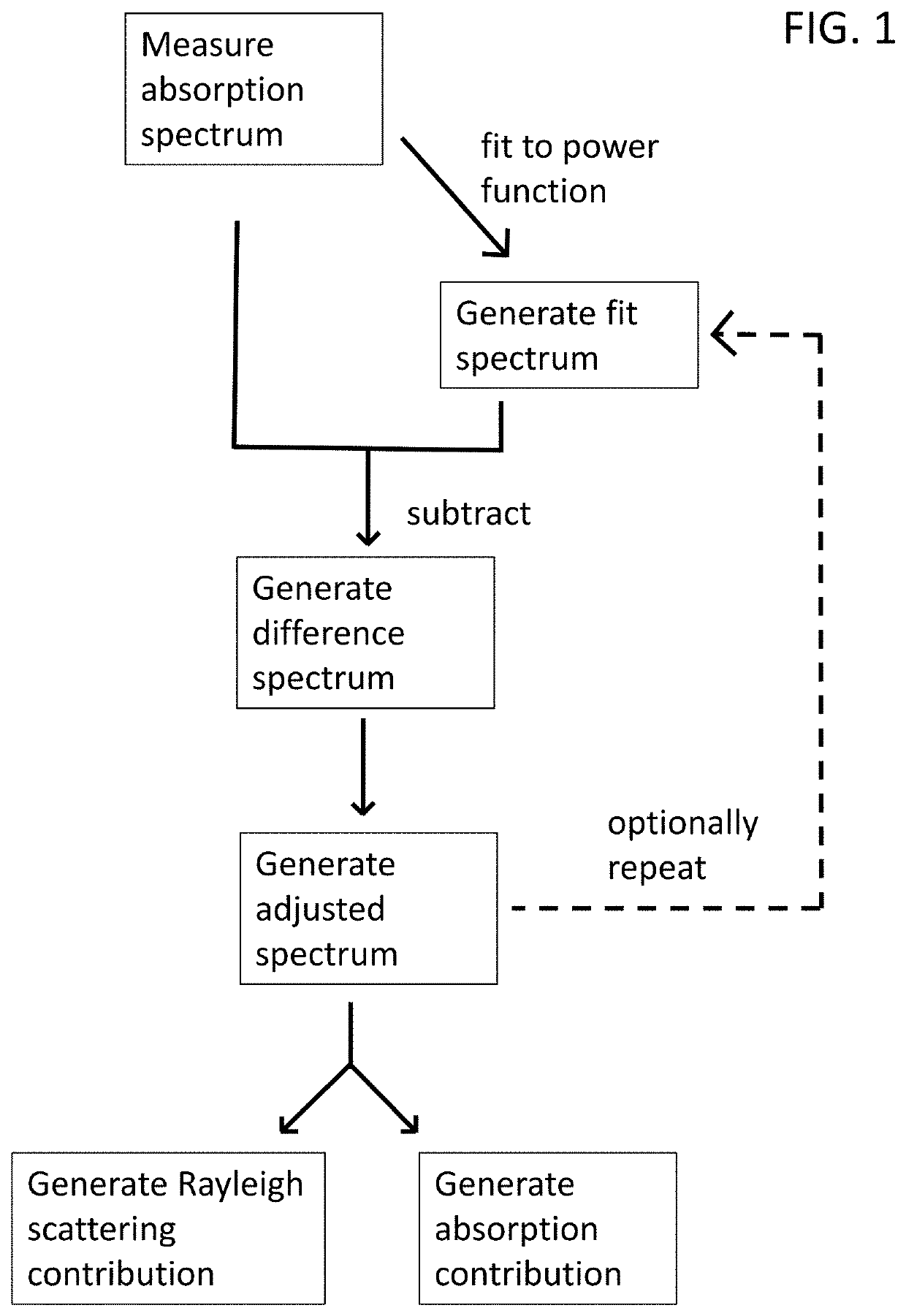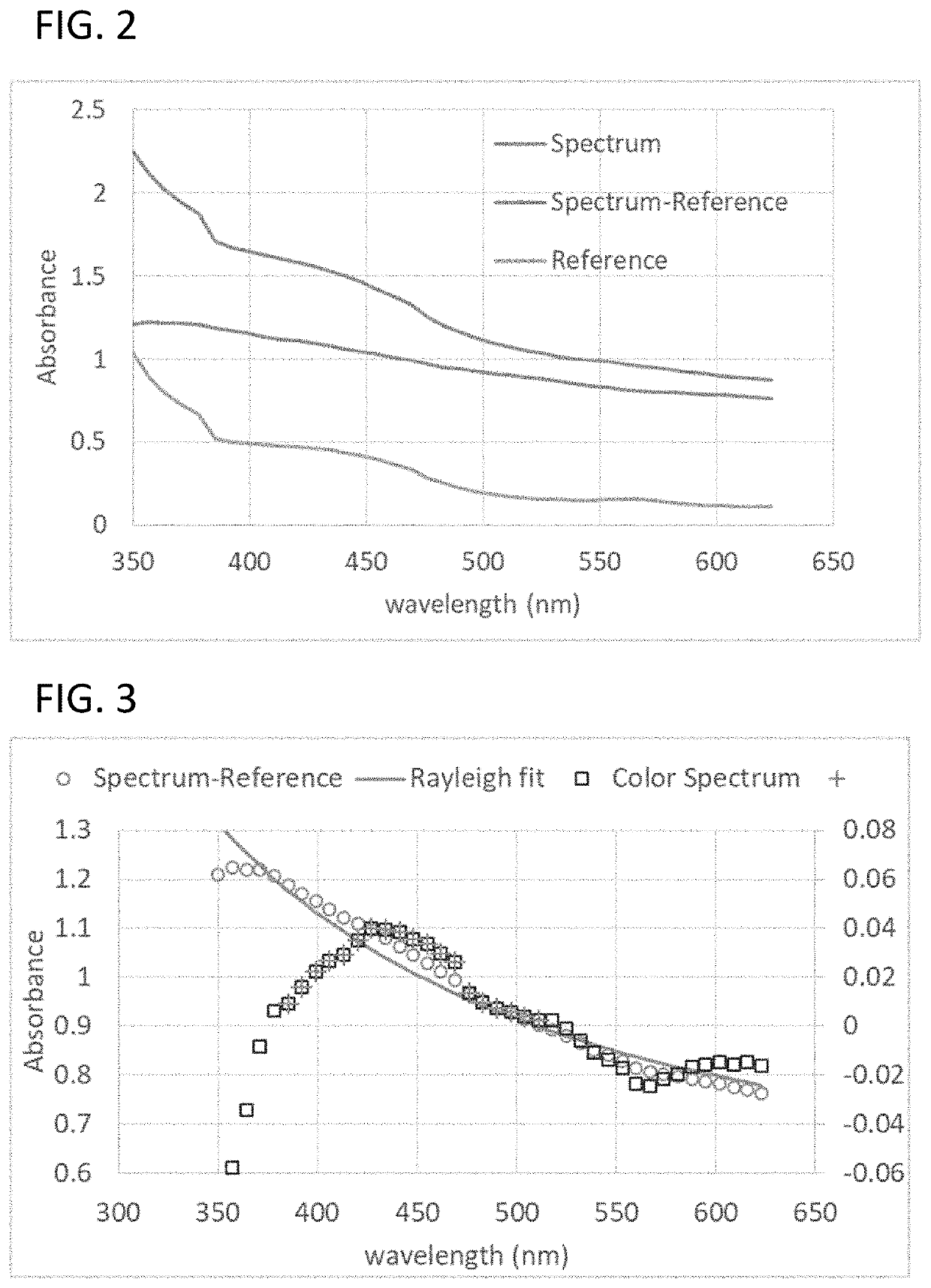Spectroscopic methods, reagents and systems to detect, identify, and characterize bacteria for antimicrobial susceptiblity
a technology of reagents and bacteria, applied in the field of spectroscopic methods, reagents and systems to detect, identify, characterize bacteria for antimicrobial susceptibility, can solve the problem that the absorption spectrum of the indicator is not perfect, and the experimentally measured absorption spectrum of the test sample is not per
- Summary
- Abstract
- Description
- Claims
- Application Information
AI Technical Summary
Benefits of technology
Problems solved by technology
Method used
Image
Examples
example 1
Changes in Phenol Red to Characterize Bacteria Presence
[0292]The presence of any bacteria in a test sample was detected. With rare exceptions, the metabolic activity of bacteria produces pH lowering metabolites. When combined with a pH indicator molecule (like phenol red), the pH lowering metabolites decreases the height of the phenol red absorbance peak at 560 nm. Alternatively, the phenol red peak at 440 nm can also be considered. Alternatively, other pH indicator molecules can also be used. The measured height of the phenol red absorbance peak is compromised by several factors, such as the presence of microbubbles in the liquid sample, the migration of these microbubbles in the optical path, the presence of various other protein aggregates, and the aggregation of these protein aggregates in the optical path. These artifacts can compromise the measured phenol red peak height, and thus impede the detection of bacteria presence. For the most part, such artifacts affect the Rayleigh ...
example 3
Changes in Phenol Red with a Urea Broth Base to Characterize Urease Producing Bacteria Presence
[0296]The presence of any urease producing bacteria in a test sample was detected. Normally, the metabolic activity of bacteria produces pH lowering metabolites. One exception to this is for bacteria that produce the Urease enzyme, and when the broth medium contains Urease as the primary source of carbon and nitrogen. In this case, the Urea is hydrolyzed with ammonia as a byproduct, thereby raising the pH of the solution / test sample. If a pH indicator molecule (like phenol red) is present in the solution, the pH increase results in an increase in the absorption peak at 560 nm. With a long enough incubation time (about 18-24 hours), the increase in the 560 nm absorbance is significant enough to be apparent to the naked eye.
[0297]This reading was conducted in about 2-3 hours of incubation, and is illustrated in FIG. 9. The chart on the top left illustrates the difficulty in reading the color...
example 7
g & Correcting MIC for Pathogen Concentration
[0310]As we observe experimentally, the antimicrobial susceptibility metric MIC is a function of pathogen concentration, as depicted in FIG. 19. Thus, estimates for MIC obtained from a test sample that is at a pathogen concentration lower than the concentration of 2×108 CFU / mL (or 0.5 McFarland) specified in the CLSI M100 standard will need to be corrected for this variation to maximize concordance between a rapid test MIC and the CLSI standard. Empirically, we find that the slope of the traces depicted in FIG. 19 scales with the absolute magnitude of the estimated MIC, as depicted in FIG. 20. Thus, an algorithm to correct the MIC for pathogen concentration is to use the empirical observed scaling relationship depicted in FIG. 20, along with the pathogen concentration estimated from the methods described in FIG. 18. As illustrated with the example for FIG. 21, the MIC that is estimated at the test pathogen concentration is 0.192 μg / mL. Se...
PUM
 Login to View More
Login to View More Abstract
Description
Claims
Application Information
 Login to View More
Login to View More - R&D Engineer
- R&D Manager
- IP Professional
- Industry Leading Data Capabilities
- Powerful AI technology
- Patent DNA Extraction
Browse by: Latest US Patents, China's latest patents, Technical Efficacy Thesaurus, Application Domain, Technology Topic, Popular Technical Reports.
© 2024 PatSnap. All rights reserved.Legal|Privacy policy|Modern Slavery Act Transparency Statement|Sitemap|About US| Contact US: help@patsnap.com










